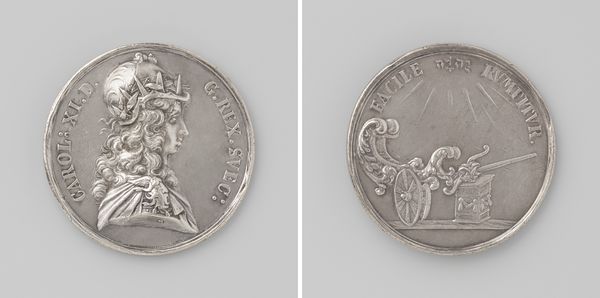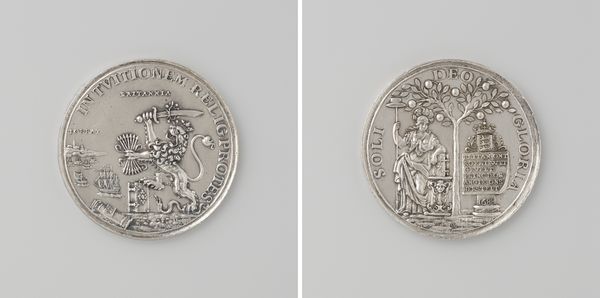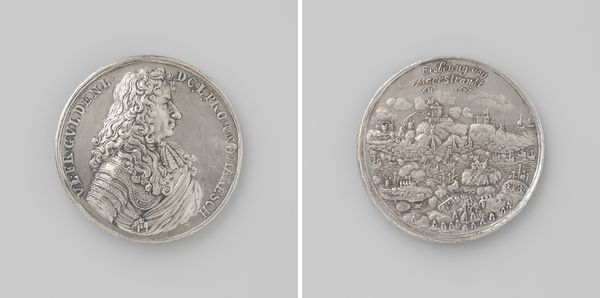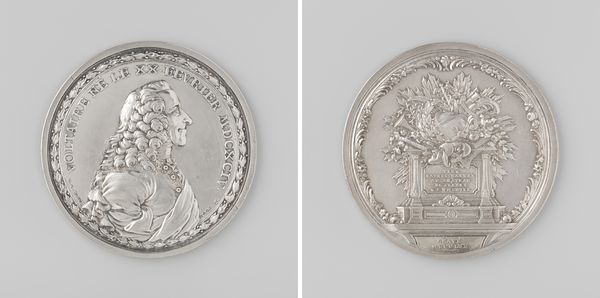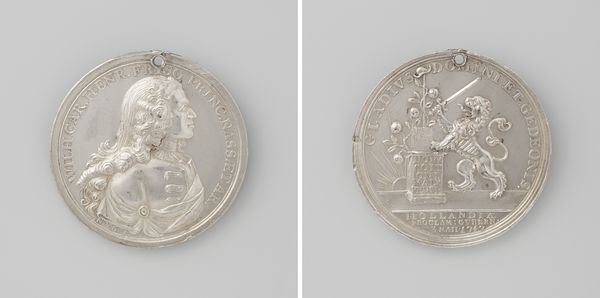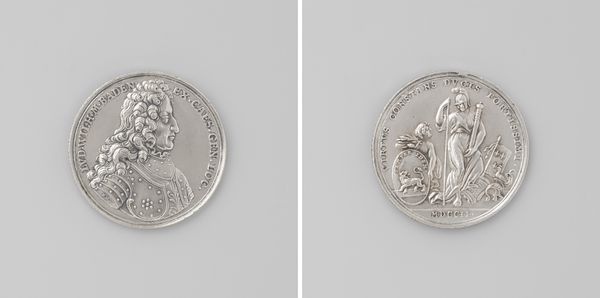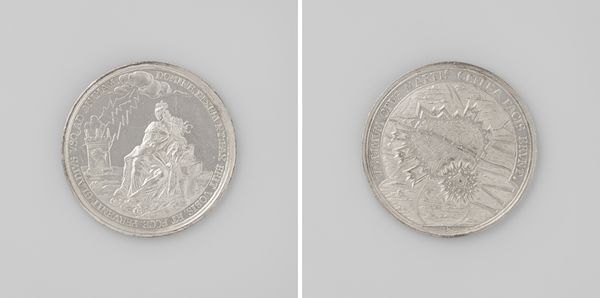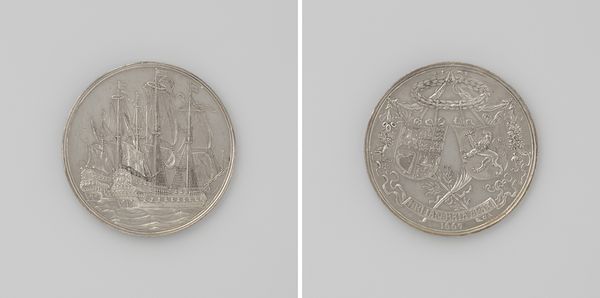
metal, sculpture, engraving
#
portrait
#
medal
#
neoclacissism
#
metal
#
sculpture
#
ceramic
#
engraving
Dimensions: diameter 2.9 cm, weight 9.21 gr
Copyright: Rijks Museum: Open Domain
Curator: Here we have a commemorative medal, "Karl Philip, prins zu Schwarzenberg," crafted in 1815 by Daniel Friedrich Loos. The medium is metal, an engraving. What's your initial read? Editor: It strikes me as restrained. The silver sheen, the precise lines of the engraving, create a sense of classical reserve, wouldn't you say? A study in controlled dignity. Curator: Indeed, the neoclassical style is evident. Karl Philip was a significant military figure, a Prince, and this medal celebrates his accomplishments during a tumultuous period in European history. Think of the political landscape then, and consider how images like this reinforced power structures. Editor: The balance is beautifully achieved between the portrait on one side and the heraldic achievement on the other. Note the composition of each, the laurel wreath against the intricacy of the crest with lions, draped cloth, crowns… It's a fascinating visual dialogue. Curator: Exactly. Consider the symbolism: the laurel wreath, a clear nod to classical notions of victory and honor, placed against the backdrop of a Europe still reeling from revolution and war. How does the context shift the symbolic power you observe? Editor: Semiotically, the choice to cast it in metal also says something. Beyond the luster and polish, metal as a material is resilient, which aligns with the desire to memorialize an important person with a very firm reminder. It mirrors a craving for stability in that era. Curator: This piece embodies a period of societal upheaval, using established visual language to reinforce notions of leadership, legitimacy and the established order. These aren't passive images; they actively shape the perception of power. Editor: It's the layering of details within the small scale that truly captures the essence of commemorative art. You could analyze it on so many levels – aesthetic, philosophical, symbolic – revealing ever deeper truths about its moment in time. Curator: Indeed. By situating this medal within its historical and political landscape, we can understand not just what it represents, but what it actively did in shaping historical memory. Editor: A close viewing of its visual design, from texture to the symbolic crests, brings a different perspective to Schwarzenberg, offering ways of engaging beyond pure biographical understanding.
Comments
No comments
Be the first to comment and join the conversation on the ultimate creative platform.

